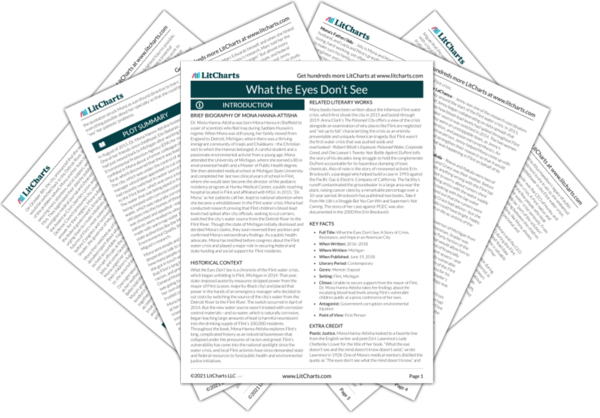In this passage, Mona takes readers through the emotional journey she went through when she realized what was happening in Flint. By showing that she felt a personal responsibility to the people of Flint, Mona is suggesting that every member of a community is duty-bound to help their neighbors and fellow community members. Even though Mona was doing her job well and with passion, here, she realized that there was always an opportunity to make real, meaningful change rather than just scratching the surface of what was possible for her community.
